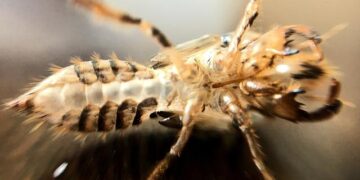Enhancements in Aquatic Biodiversity Through Metal Pollution Mitigation in England’s Rivers
Introduction to the Positive Shift in River Ecosystems
Recent developments have shown a noteworthy increase in biodiversity across the river systems of England, primarily attributed to significant reductions in metal pollution levels. This positive change highlights the crucial role of environmental regulations and improved waste management practices.
The Impact of Metal Pollution on Aquatic Life
Historically, metal pollutants such as lead, copper, and zinc have posed substantial threats to aquatic ecosystems. These heavy metals can disrupt biological processes in fish and other water-dwelling organisms, leading to decreased population diversity and health issues within these communities. Prolonged exposure often results in bioaccumulation leading to toxic effects not just on aquatic life but also on predator species within food webs.
Current Trends: A Statistical Overview
A recent assessment indicated that metal concentrations have noticeably diminished over the past decade due to concerted efforts by regulatory bodies. For instance, studies show that lead levels dropped by 40% from previous high-water marks between 2011 and 2021, bolstering fish recovery rates significantly. Additionally, with approximately 30% fewer occurrences of outdated industrial waste discharges into waterways reported this year compared to five years prior, many endemic species are finally experiencing a chance for resurgence.
Restoration Efforts: Collaborative Approaches for River Health
Various agencies dedicated to environmental preservation have implemented multifaceted strategies aimed at revitalizing riverine ecosystems. Initiatives include upgrading wastewater treatment facilities equipped with advanced filtration technologies capable of removing harmful metals before they enter natural waterways. Community engagement projects are also being pursued—such as local clean-up days—where citizens contribute to maintaining water quality.
Enhanced Species Diversity: Evidence from Recent Studies
Researchers recently documented an uptick in various fish species along several English rivers once thought critically endangered due primarily to heavy pollution levels. Species such as barbel (Barbus barbus) and European eel (Anguilla anguilla) have been noted returning more robustly after being virtually absent from some areas for decades.
The Role of Continuous Monitoring:
The success seen thus far emphasizes the necessity of ongoing monitoring programs that evaluate pollutant levels regularly while providing critical data needed for future conservation efforts.
Conclusion: A Path Towards Sustainable River Ecosystems
The reduction of metal contaminants has cultivated an encouraging shift toward flourishing biodiversity within England’s rivers—a testament not only to regulatory effectiveness but also collective societal effort towards sustainable ecological stewardship moving forward. As we continue nurturing these precious ecosystems through informed actions and policies, we set a precedent for future generations prioritizing both environmental health and bio-diversity conservation.
By observing this transformative journey towards clearer waters rich with life once again thriving alongside humans’ continued commitment toward responsible resource management practices will be essential.































